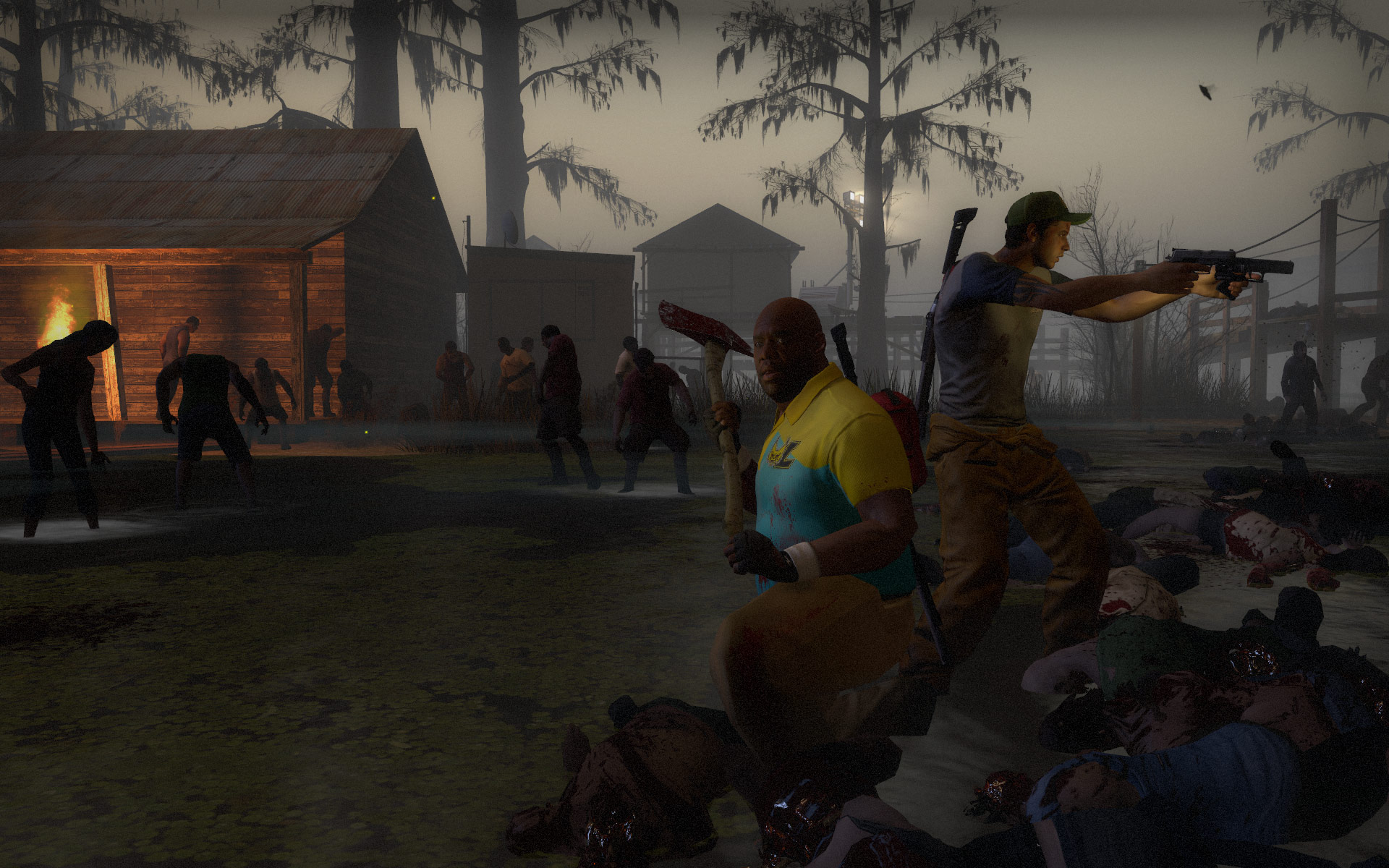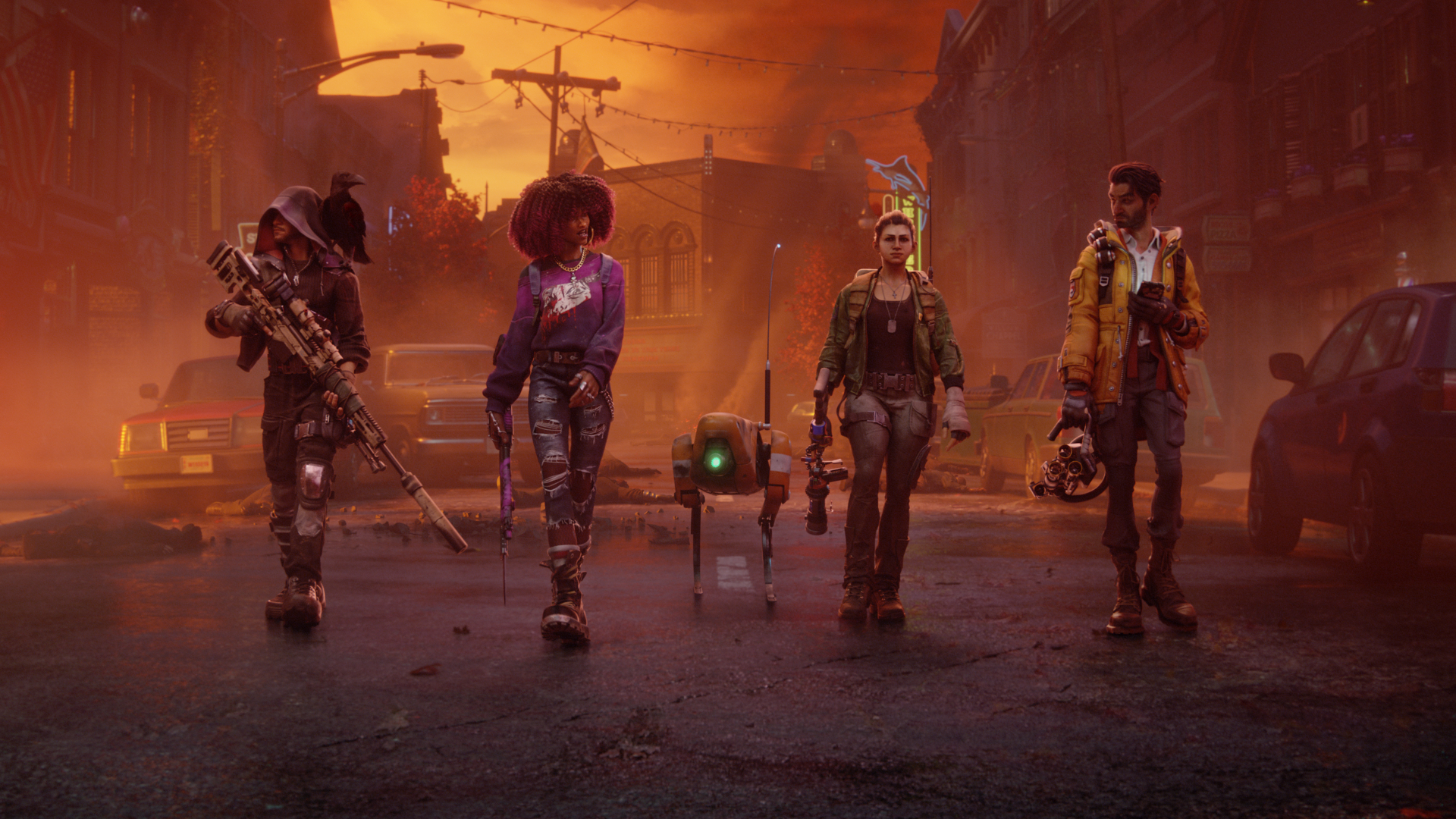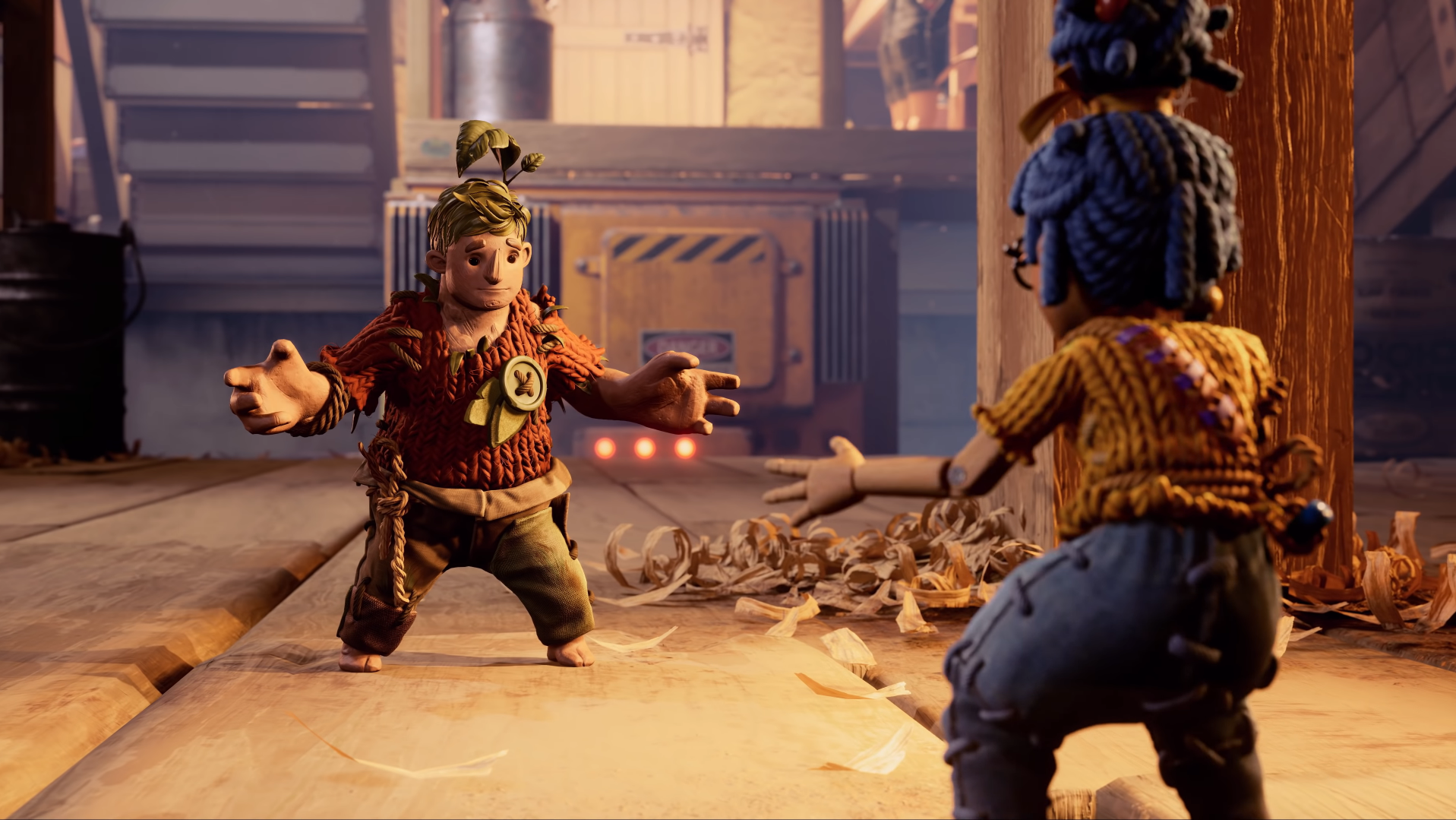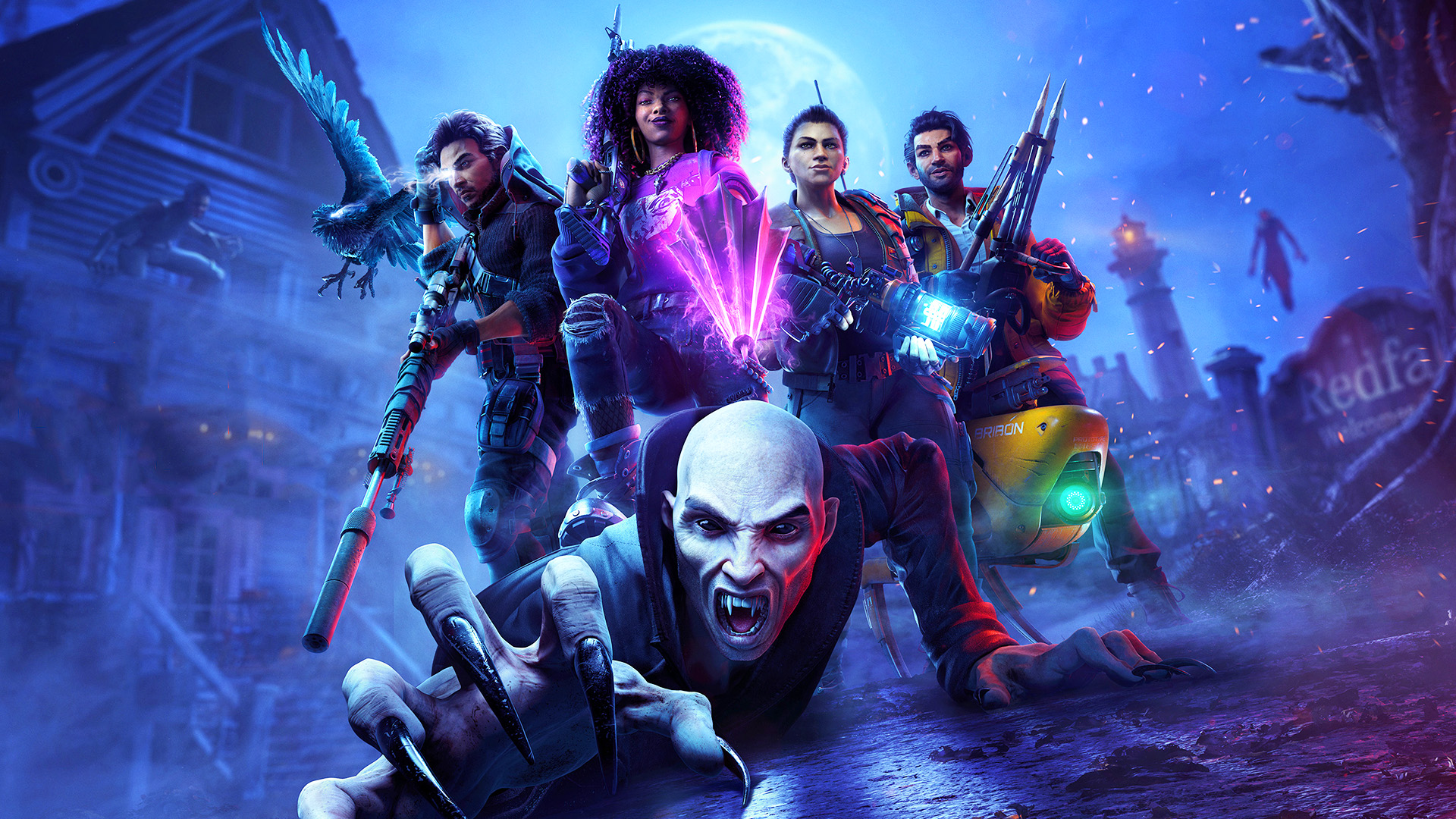Like seemingly the rest of the Internet, I did not get along with Redfall. As a huge fan of Arkane’s classically-styled immersive sims, I’ll admit that a four-player looter-shooter wasn’t what I wanted from the studio. But even judged on its own merits, there’s precious little about Arkane’s latest to praise. The empty world, the flat vampire combat, the bugs and technical issues, the terrible AI. It clearly wasn’t ready to be released.
Frankly though, I’m not sure Redfall would ever have been ready. The flaws outlined above may be fixable in the long term, but there’s one feature of Redfall that I think is fundamentally at odds with Arkane’s design philosophy: It’s a four-player co-op game.
Redfall was pitched as a cross between Dishonored and Destiny, a co-operative, shared-world action game infused with the systemic magic of Arkane’s immersive sims. The way it approaches this, however, is to take the imaginative abilities of a Corvo Attano or a Morgan Yu, and split them across four characters. One character gets a Corvo-like short-range teleport, another gets Morgan Yu’s Lift Field. One gets the ability to tag enemies, another the ability to distract them.
By working together, so the idea goes, you can harness the power of everyone in your party. Yet whatever the developer’s intent, playing as a quarter of an Arkane protagonist is simply not as fun as playing as a whole one. After experiencing the boundless creative potential of Dishonored and Prey, being stuck with diet Corvo is inevitably disappointing, and having a friend deploy powers for me is simply not as enjoyable as doing it myself.
The apparent solution would be to give every character the depth of Corvo or Morgan or Emily Kaldwin. But while I wouldn’t claim to understand all the nuances of game development, even I know this would be astoundingly complicated to make. More importantly, I’m not sure it would solve the problem, because such complexity runs counter to what makes most four-player co-op games fun.

The more players you put together in a group, the harder it is for that group to make complex decisions, and the easier it is for the game to devolve into a chaotic mess. This is why most four-player co-operative games tend to be highly authored experiences with simple, clear objectives that embrace chaos as part of the design. Games like Left 4 Dead and Darktide make it very clear where players need to go, and their objectives rarely involve anything more complicated than pressing a button or defending a location. The fun derives from how these games try to stop players from completing these objectives, using hordes of foes to pile on the pressure, alongside more specialised enemies designed to prise the team apart. In this way, they encourage players to work together, but through reflex and reaction rather than planning and forward-thinking. Larger games like Borderlands do this too. They might have more open worlds for players to traverse, but when it comes to mission time, their structure doesn’t differ vastly from what Left4Dead does.
There is a version of Redfall’s idea that I think could work. But it requires a different kind of compromise
This is where Redfall comes unstuck, because it clearly wants to do more than just throw hordes of enemies as its players. It wants them to work together to overcome more open-ended challenges. But Arkane doesn’t seem to know how to marry its hallmark creative play with a cooperative shooter, resulting in a compromised experience that doesn’t satisfy in either camp.
There is a version of Redfall’s idea that I think could work. But it requires a different kind of compromise, namely, reducing the number of players from four to two. This would help solve a number of problems. First, it’s much easier to create two immersive-sim like protagonists than it is four. In fact, we know Arkane can do this, because they already have. Dishonored 2 let you play as either Corvo or Emily, each of whom had completely different powers, and the game worked brilliantly in the shoes of either. It wasn’t a co-operative game, but it shows how you can build a game that works equally well when played with different characters.

In addition, it’s easier to build a world that’s engaging to interact with for two players than it is four. While nobody has yet made a co-operative game in Arkane’s mould (although Deathloop can be played co-operatively if you find a Juliet willing to work with you) there are a couple of reasonably close analogues that can be found. One is Splinter Cell: Chaos Theory, which brilliantly adapted its meditative stealth gaming into a co-operative mould. Its missions are purpose built to encourage coordination, with players working together to take out guards without raising the alarm. Games like Far Cry 5 and Sniper Elite 5 also work well with two-player co-op even though they aren’t built specifically for it, as their structure of raiding large, open-ended bases fits neatly with two-player coordinated teamwork.
I also think there’s an untapped market for quality two-player co-op games. Four-player co-op sounds cool on paper, but more often than not, I end up playing these games with two or three people anyway, because getting a team of four together on a regular basis is a hassle. It’s worth noting that many such games, Redfall included, claim to be playable with 1-4 players. But as with boardgames, there’s usually an optimal number for the best experience, and in most cases that number is four.

Finding one other person to play with, by comparison, is much less challenging. It’s far easier to organise, and there’s more likelihood of one of my friends being available, than several of them at the same time. The wild success of It Takes Two, which doesn’t just feature two-player co-op but makes a point of it, demonstrates the potential for more specialised co-operative experiences.
There are, of course, many more immediate problems that Redfall faces, and it’s possible fixing those issues would result in a great game without slashing the player count in half. Nonetheless, I still believe gaming’s obsession with this specific type of four-player co-op is blinding it to more interesting co-operative experiences, and I can certainly envision a two-player Arkane game that plays to all the studio’s strengths. I reckon Arkane’s next project will be resolutely single-player and true to the studio’s legacy, but I wouldn’t say no to a Dishonored 3 that let Corvo and Emily team-up.





